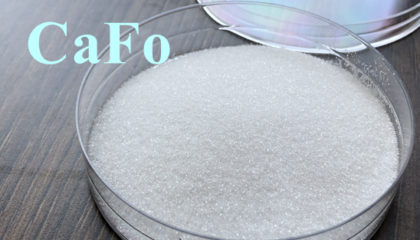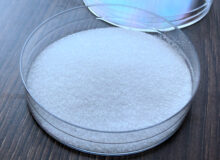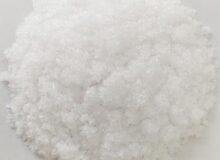Potassium Diformate
Potassium Diformate
K-Diformate
CAS: 20642-05-1
Molecular structure: C2H3KO4
Molecular weight: 130.14
Appearance: White or light yellow crystal or crystal powder, It is easily soluble in water and highly hygroscopic; it is stable under acidic conditions, and easy to decompose into formic acid and formate under neutral or slightly alkaline conditions.
Synonyms POTASSIUM DIFORMATE; FORMIC ACID, POTASSIUM SALT (2:1); potassium formate(1:2); Potassium hydrogen diformate (KHF)
Product Description
Potassium diformate is a non-antibiotic feed additive approved by the European Union in 2001 to replace antibiotic growth promoters. It is an ideal substitute for antibiotic growth promoters and has a good bactericidal effect on Escherichia coli and Salmonella.
The primary reason for potassium diformate to become an alternative to antibiotics allowed by the EU is its safety and antibacterial effect, based on a simple and unique molecular structure. The main components of formic acid and potassium formate are present in nature or in the intestine of pigs, and finally (oxidized and metabolized in the liver) are decomposed into carbon dioxide and water, which can be completely biodegraded. It reduces the excretion of pathogenic bacteria and animal body nitrogen and phosphorus, and effectively purifies the animal’s growth environment.
Specification
| Item |
Potassium Diformate |
|
| Appearance | White crystal Powder | White crystal Powder |
| Potassium diformate% | ≥98 | ≥95 |
| As % ≤ | 2ppm | 2ppm |
| Heavy Metal(Pb)% ≤ | 10ppm | 10ppm |
| Anti-Caking Agent(SiO2)%≤ | — | 3.0 |
| Moisture % ≤ | 3.0 | 3.0 |
Functions
Potassium diformate is a new type of antibiotic growth promoter substitute product. It has functions like-
(1) Adjust the palatability of feed and increase intake of feed;
(2) Improve the internal environment of the digestive tract and lower the pH value in stomach and small intestine;
(3) It has the effect of an antibacterial and growth-promoting agent. The addition of potassium diformate can significantly reduce the content of anaerobic bacteria, Lactobacillus, Escherichia coli and Salmonella in each segment of the digestive tract, improve the resistance of animals to diseases, and reduce the rate of deaths due to bacterial infections;
(4) It can significantly increase the daily gain and feed conversion rate of pigs;
(5) Prevent and heal piglet diarrhea;
(6) Increase milk production of dairy cows;
(7) Inhibit harmful components such as mold in the feed, ensure the quality of the feed, and improve the shelf life of the feed.
K-Diformate increases performance
| Addition of K-Diformate | Control | K-Diformate (1.2%) | |
| Number of piglets (n) | 105 | 105 | |
| Feed intake (g/d) | 672 | 679 | 1.04% |
| Weight gain (g/d) | 408.5a | 474.1b | 16.06% |
| Feed conversion rate | 1.65a | 1.43b | 13.33% |
| a, b = significant differences between K-Diformate treatment groups. | |||
(Eidelsburg et al., 2007)
Technical Data
|
Feeding Rates |
||
| Piglets: | Fattening Pigs: | Sows |
| 8 – 12 kg/tonne of feed | 6 – 10 kg/tonne of feed | 10 – 12 kg/tonne of feed |
Packing size
25kg bags.
Related Products

Calcium Formate
Feed & Concrete/Tile adhesives


